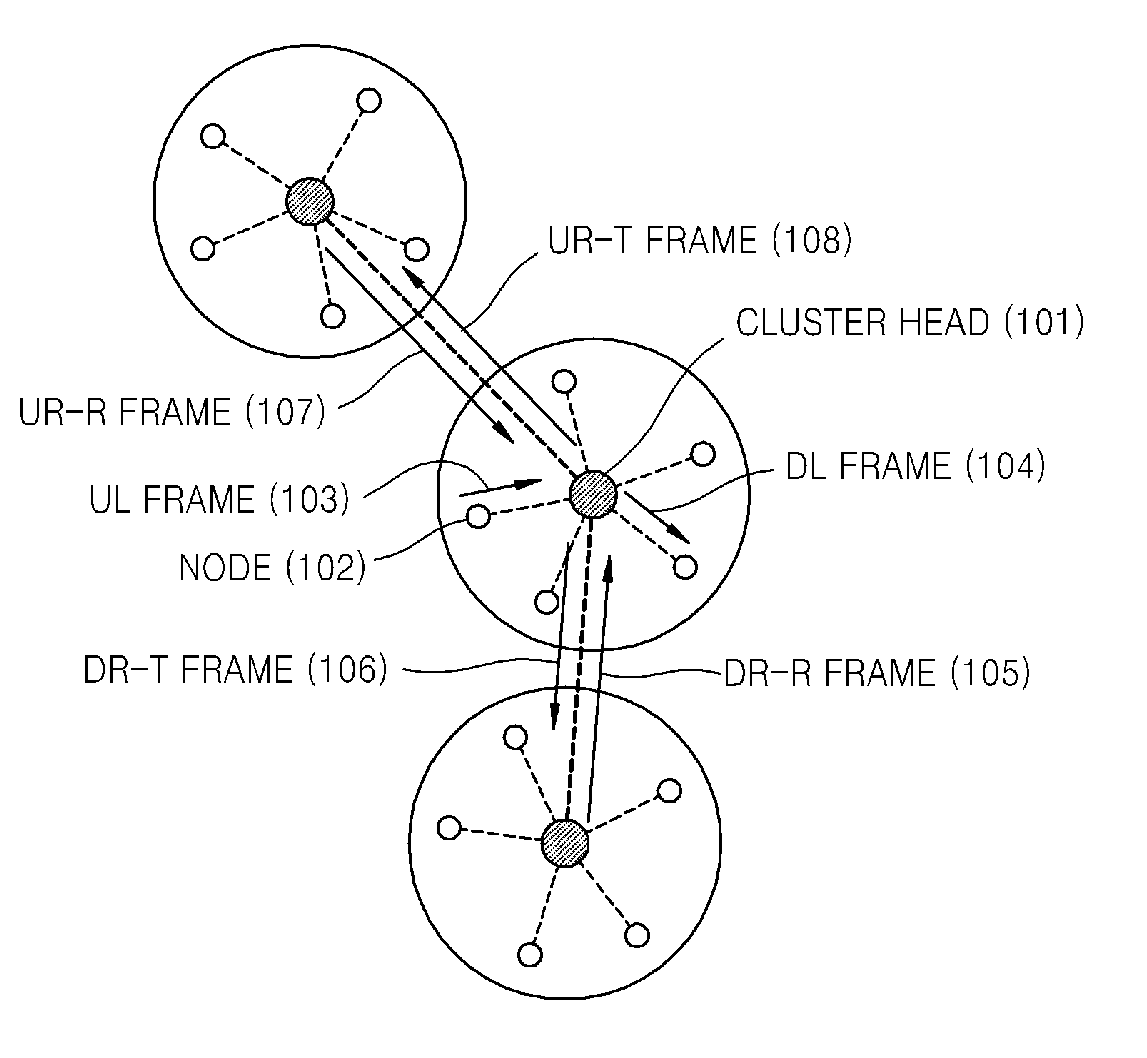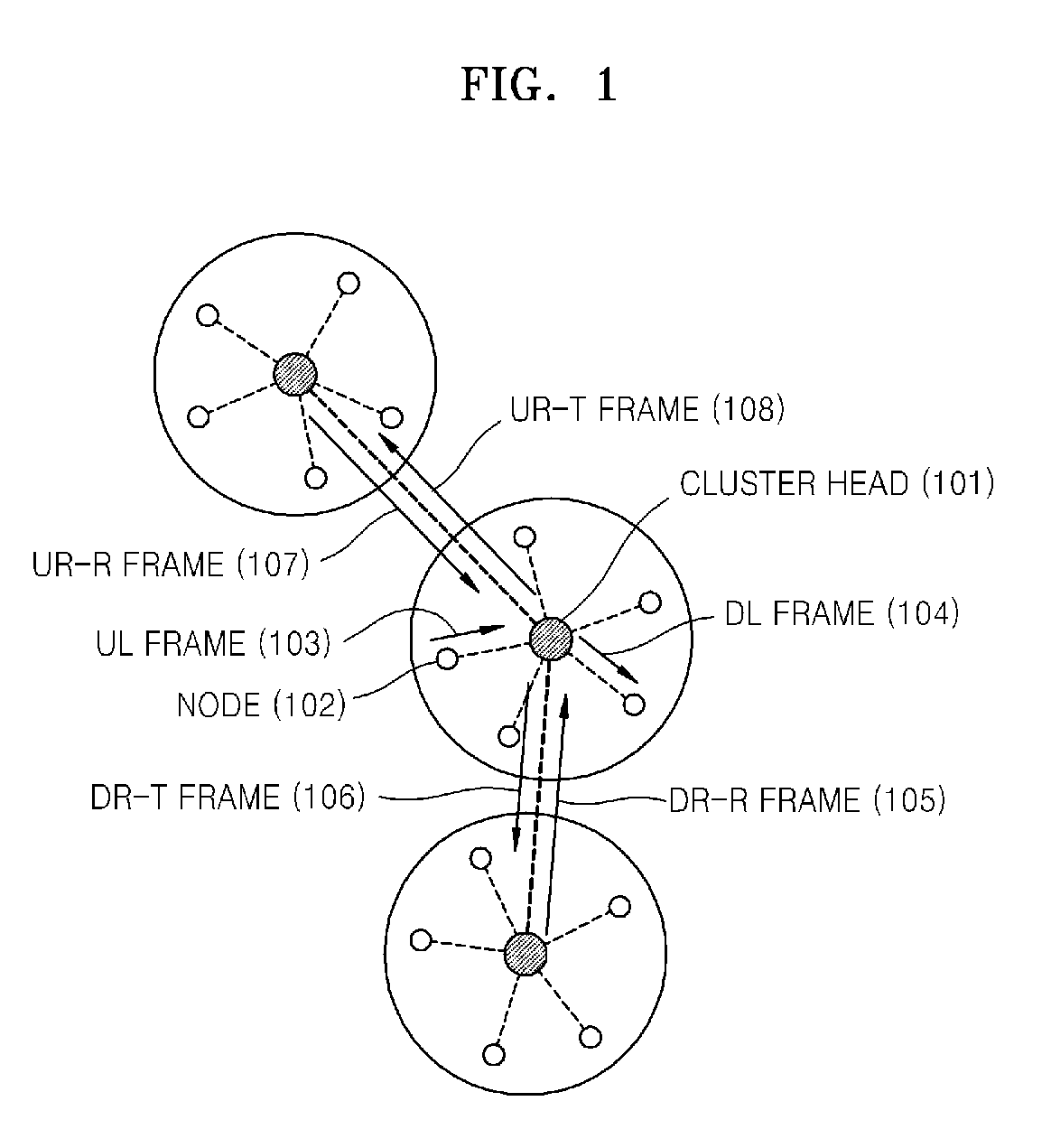Method and apparatus for allocating resources to a node in ad-hoc network
a node and resource technology, applied in the field of cluster heads, can solve the problems of wasting additional resources, wasting additional resources, and over-all energy consumption, and achieve the effect of minimizing the amount of energy consumption and the configuration time of the ad-hoc network, and rapid allocating resources without losses
- Summary
- Abstract
- Description
- Claims
- Application Information
AI Technical Summary
Benefits of technology
Problems solved by technology
Method used
Image
Examples
Embodiment Construction
[0026]The attached drawings for illustrating exemplary embodiments of the present invention are referred to in order to gain a sufficient understanding of the present invention, the merits thereof, and the objectives accomplished by the implementation of the present invention. Hereinafter, a method and apparatus for allocating resources to nodes in the ad-hoc network according to an embodiment of the present invention will be described in detail by explaining exemplary embodiments thereof with reference to the attached drawings. Like reference numerals in the drawings denote like or similar constituent elements or operations in the present invention.
[0027]According to an embodiment of the present invention, first, a basic frame structure used for data transmission by a node in an ad-hoc network is defined. Then, when a node in the ad-hoc network transmits data, time slots are rapidly allocated to avoid collision with neighboring nodes.
[0028]In particular, in this method, when the no...
PUM
 Login to View More
Login to View More Abstract
Description
Claims
Application Information
 Login to View More
Login to View More - R&D
- Intellectual Property
- Life Sciences
- Materials
- Tech Scout
- Unparalleled Data Quality
- Higher Quality Content
- 60% Fewer Hallucinations
Browse by: Latest US Patents, China's latest patents, Technical Efficacy Thesaurus, Application Domain, Technology Topic, Popular Technical Reports.
© 2025 PatSnap. All rights reserved.Legal|Privacy policy|Modern Slavery Act Transparency Statement|Sitemap|About US| Contact US: help@patsnap.com



